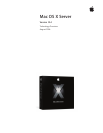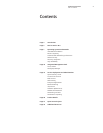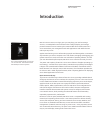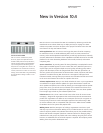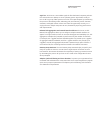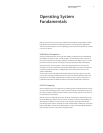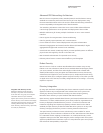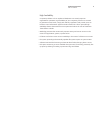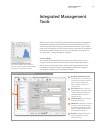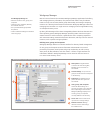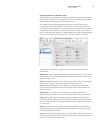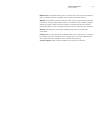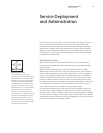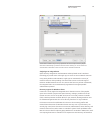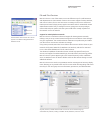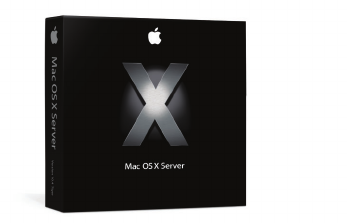
3
Technology Overview
Mac OS X Server
Introduction
Mac OS X Server version 10.4 Tiger gives you everything you need to manage
servers in a mixed-platform environment and to con gure, deploy, and manage
powerful network services. Featuring the renowned Mac OS X interface, Mac OS X
Server streamlines your management tasks with applications and utilities that are
robust yet easy to use.
Apple’s award-winning server software brings people and data together in innovative
ways. Whether you want to empower users with instant messaging and blogging, gain
greater control over email, reduce the cost and hassle of updating software, or build
your own distributed supercomputer, Mac OS X Server v10.4 has the tools you need.
The power and simplicity of Mac OS X Server are a re ection of Apple’s operating sys-
tem strategy—one that favors open industry standards over proprietary technologies.
It begins with a UNIX-based foundation built around the Mach microkernel and the
latest advances from the open source BSD community. This foundation provides Mac
OS X Server with a stable, high-performance, 64-bit computing platform for deploying
server-based applications and services.
Open source made easy
Tiger Server is the fth major release of Mac OS X Server, providing standards-based
workgroup and Internet services without the complexity of Linux or the cost inherent
in other UNIX-based solutions. Instead of developing proprietary server technologies,
Apple has built on the best open source projects: Samba 3, OpenLDAP, Kerberos,
Post x, Apache, Jabber, SpamAssassin, and more. Mac OS X Server integrates these
robust technologies and enhances them with a uni ed, consistent management
interface. Powerful administrative tools permit novices to con gure and maintain
core network services, while providing the advanced features and functionality
required by experienced IT professionals.
Because it is built on open standards, Mac OS X Server is compatible with existing
network and computing infrastructures. It uses native protocols to deliver directory
services, le and printer sharing, and secure network access to Mac, Windows, and
Linux clients. A standards-based directory services architecture o! ers centralized
management of network resources using any LDAP server—even proprietary servers
such as Microsoft Active Directory. The open source UNIX-based foundation makes it
easy to port and deploy existing tools to Mac OS X Server.
The Universal release of Mac OS X Server
runs on both Intel- and PowerPC-based
Mac desktop and Xserve systems.



